Poinsettia: description, types and tips for growing
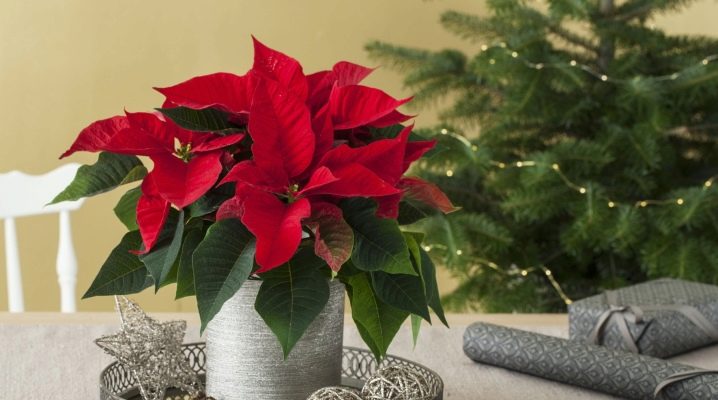
Today, a huge number of ornamental crops are grown at home by amateurs and professionals. Most of them stand out for their visual appeal in the flowering phase. Among this list, a special place is occupied by poinsettia from the Euphorbia family, presented today in a wide variety of varieties and colors.
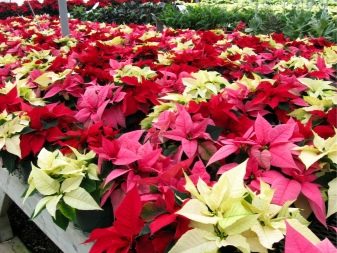
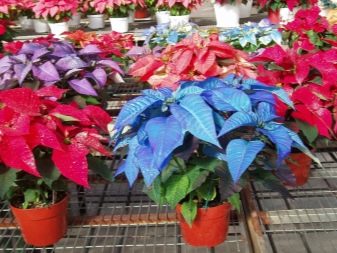
What it is?
Poinsettia has many names, among which one can single out quite popular and fully characterizing the appearance of a flower during flowering - "Christmas Star". Florists use another name for the plant - the most beautiful euphorbia. According to some beliefs, it is this culture that is a symbol of the hearth and harmony in the house.
A feature of this decorative culture is the period of its flowering, which falls exactly on the Christmas holidays. At home, the flower is transformed due to the appearance of flowers with inflorescences, which outwardly resemble a New Year's decoration-star. However, the culture owes its attractive appearance not to the flowers at all, but to the inflorescences bordering the rather small and nondescript buds located inside. The bracts themselves are leaves that differ from the usual green mass, appearing only at the time of flowering of an indoor ornamental plant.
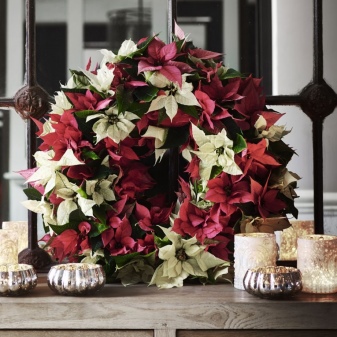
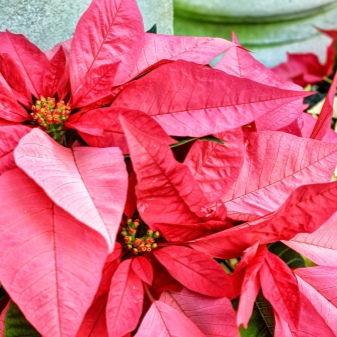
Poinsettia stands out for its unpretentiousness in terms of conditions for growth and development, so anyone can grow a blooming culture in a pot at home. Quite often, it is cultivated for the decoration of public premises in winter on the eve of the New Year holidays. In addition, poinsettia can be a successful and rather symbolic present.
Mexico is considered the birthplace of this flower, since it was there that this plant from the Euphorbia family was first discovered. In the course of studying this culture, it was found that the milky juice of this particular plant was extracted by the Indians for the preparation of a drug that would cure a fever. In addition, poinsettia was actively used by indigenous peoples in the manufacture of natural dyes for fabrics, as well as for cosmetics.

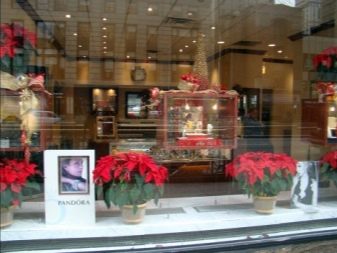
At the end of the 19th century, the culture was brought to America, where they began to grow it in botanical gardens, as well as in greenhouses. This popularity was due to the high decorative qualities of the "Christmas Star", which eventually appeared in Europe. The main area where the culture was used was amateur and professional gardening. In the first case, the flower was grown to decorate the home for Christmas, in the second - as a copy for exhibitions, as well as subsequent sale.
As for the post-Soviet space, the most beautiful euphorbia became in demand as a decorative indoor culture only at the end of the 20th century.
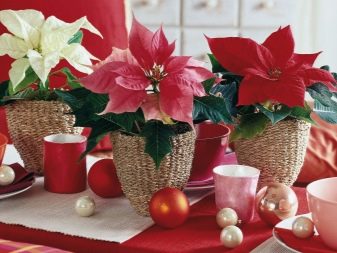
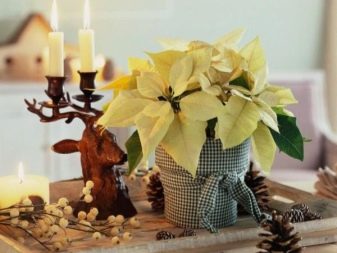
Considering the development of poinsettia in a natural environment, it should be noted that the plant is a green perennial that can reach a height of about four meters as it grows. The culture has perfectly adapted to the hot and arid climate with a rare ingress of moisture into the soil.Externally, the foliage of the flower has an ovoid elliptical shape with jagged edges. The length of the leaves ranges from 15 centimeters.
The flowers of the plant are painted in white-yellow shades, they are formed in the form of small inflorescences, which form a rosette on the crown of the flower. Before her flowers begin to form, bracts appear, which remain viable for several months.

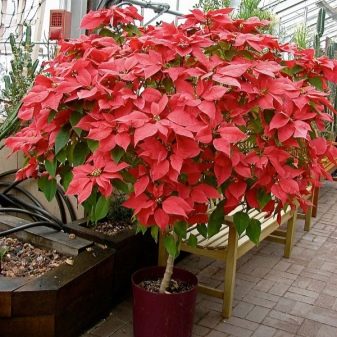
If you properly care for the culture indoors, then it usually reaches a small size, which rarely exceeds the mark of half a meter. In this case, the bracts reach a length of 10-15 centimeters, with a width of about 6 centimeters. The flower stalks of the culture are quite spreading, their diameter will be in the range of 20-30 centimeters.
In species of the most beautiful milkweed that grows in their natural environment, the bracts are always red. They contrast beautifully with the dark green leaves. However, modern plant breeders have produced plants that stand out for completely incredible colors that are not limited to a single color palette in color.
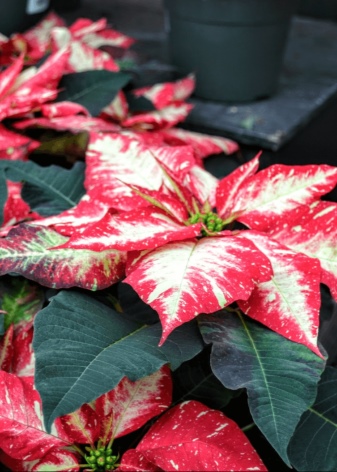

Poisonous or not?
Poinsettia belongs to the euphorbia family due to the presence of milky juice in its tissues. There is an opinion that it poses a threat to people and animals, however, in order to cause serious harm to health, a person will need to eat about five hundred leaves of the plant.
But upon contact with the skin, the juice can provoke the appearance of an allergic reaction, but subject to its individual intolerance.
To protect yourself from such negative consequences, when working with a flower when planting it in a pot or other manipulations, you should wear gloves and wash your hands thoroughly after contact with the crop.
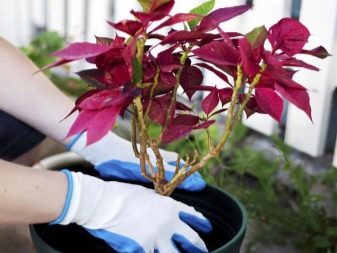
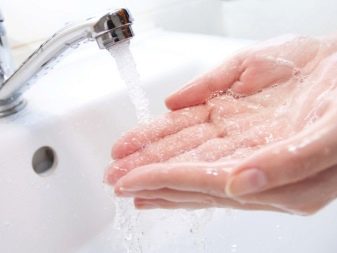
Among the contraindications, it is worth noting the danger when milky juice enters the mucous membranes or into the respiratory tract. Therefore, an ornamental plant should be placed indoors in a safe place, especially if there are small children in the house. Poinsettia can be dangerous for cats, which very often show interest in houseplants.

Varieties
Today, in greenhouses and flower shops, you can find a huge number of hybrid poinsettia varieties, the height of which can vary between 20-50 centimeters. These sizes are optimal in order to grow a culture in an indoor environment, which will delight with its beautiful flowering in winter. Among the most demanded varieties are tropical plant varieties.
- Premium Red. Red is the classic version of the plant with a green-yellow core. The bracts of this flower are rather wide and pointed towards the edges. Most often, this variety is propagated and cultivated as a symbol of the Christmas holidays.
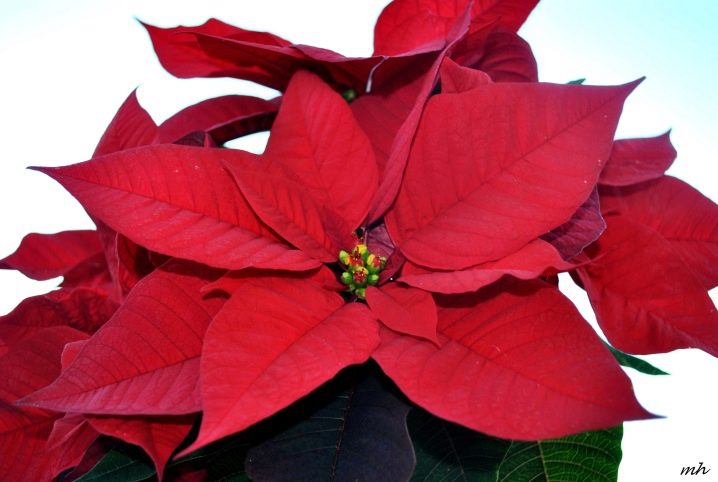
- Cortez Burgundy. The plant will be of medium size and will be beautiful and rich in color during the flowering phase. The culture is distinguished by stipules, which, forming on the flower, will have a crimson color at the top.

- Cortez Red. A variety that is in demand in the light of the fiery scarlet color of the upper leaves, which will have green blotches in their veins.
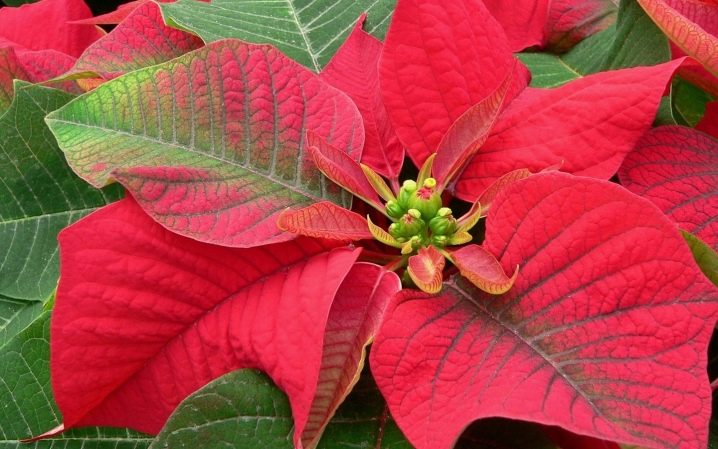
- Sonora White and Infinity White. Poinsettia varieties that, during flowering, will be decorated with white bracts, as well as ivory foliage. This culture looks no less festive, but due to the delicate light colors it has a more romantic and sophisticated appearance.
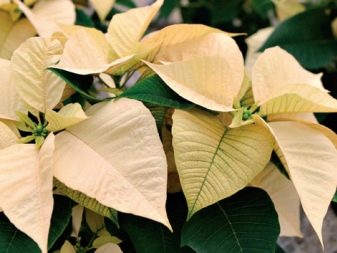
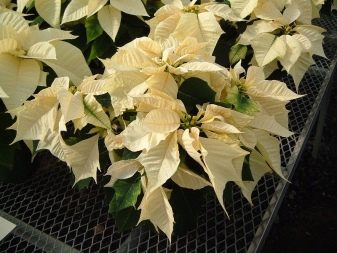
- Moren Pink, Freedom Pink, Cortez Pink... Varieties of pink poinsettia, bracts can range from milky pink to bright salmon color.
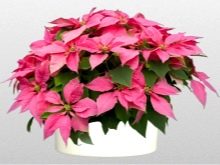
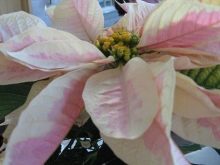
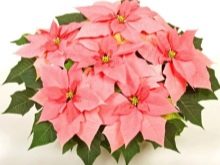
- Polar Bear. A beautiful plant that, in the flowering phase, forms a yellow-green core with bright emerald veins on the crown.
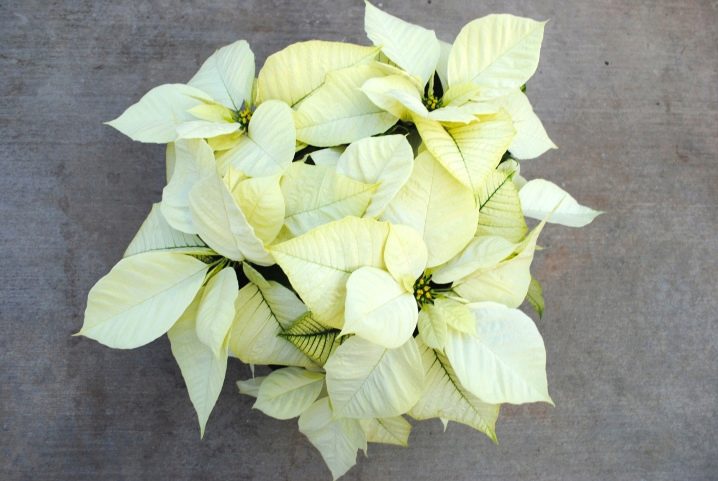
- Strawberry and Сream. A bright and extraordinary indoor variety that will bloom in a beautiful composition of purple bracts with white edges.
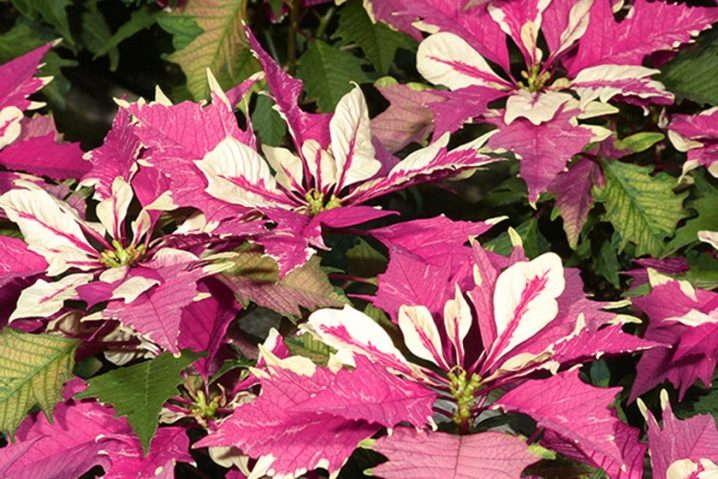
- Premium Miro. Popular variety with slightly curved leaves and double color. As a rule, the plant pleases its owners with white and pink color combinations.
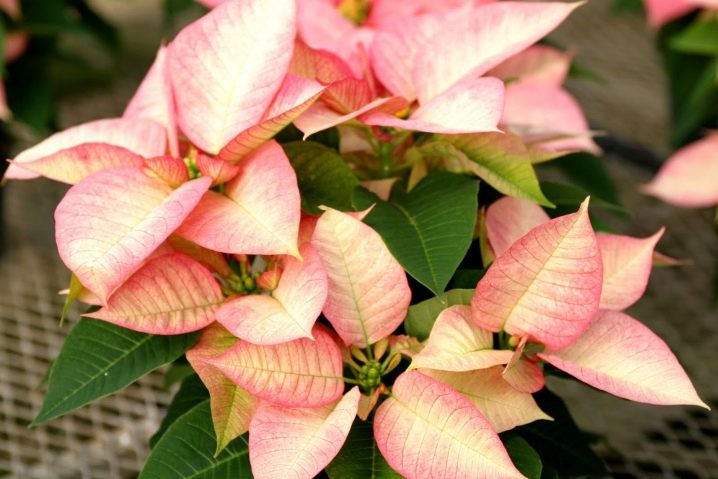
- Sonora Marble. A flower belonging to variegated varieties. After purchase, the plant will bloom with newly formed bracts with a pink and pale white color, leaving the lower foliage with a rich green.
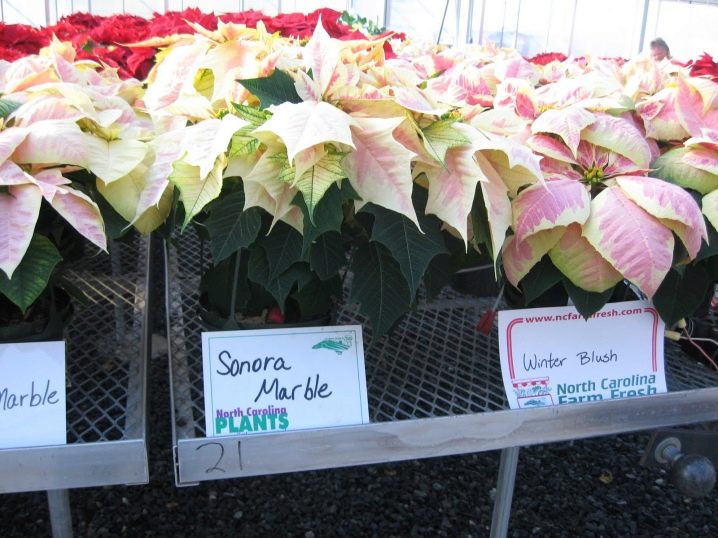
- Winter Blush Marble. A very expressive variety of indoor plants. It will be possible to distinguish a flower of this variety from other varieties by pink leaves, which will be decorated with an ivory or white first snow border.
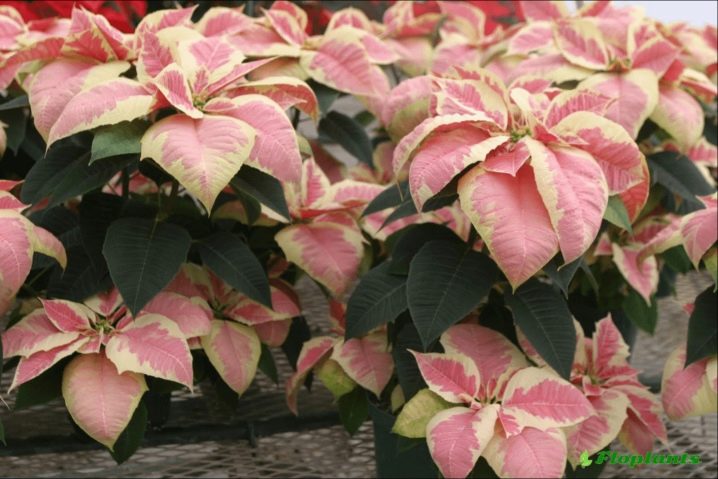
- Da Vinci. An unusually beautiful look of hybrid poinsettia, which during flowering will be decorated with bright pink foliage with carmine intersperses.
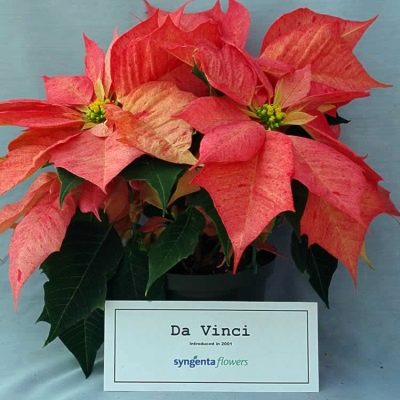
- Monet Twilight. This culture is distinguished by pale pink bracts, which will adorn the scarlet blotches.
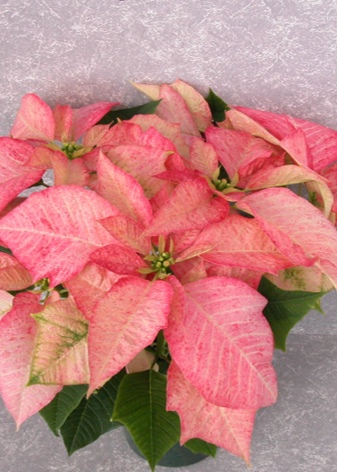
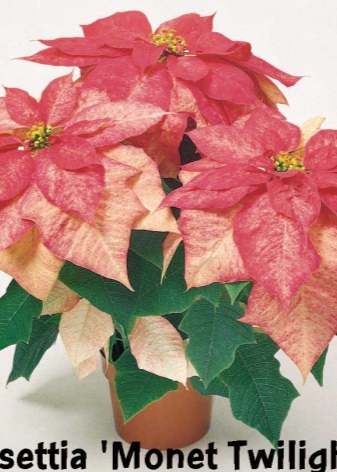
- Tapesty. A plant with red leaves, which will be decorated with a yellow border.
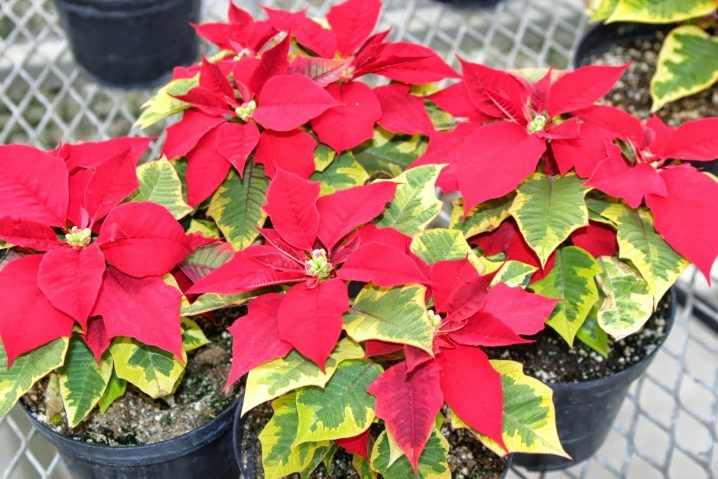
- Carousel Dark Red. Poinsettia with rich scarlet leaves, the inflorescences of this variety will be green.
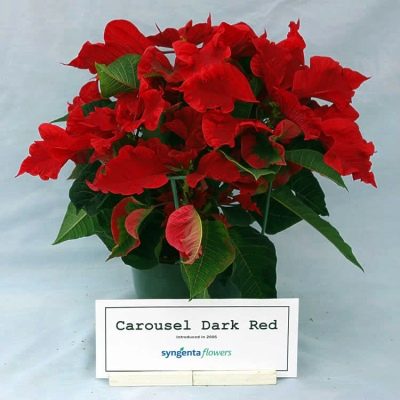
- Cinnamon Star. An exotic hybrid, which in the flowering phase will decorate the bracts of a beautiful orange hue, but over time they will acquire an unusual pink blush.
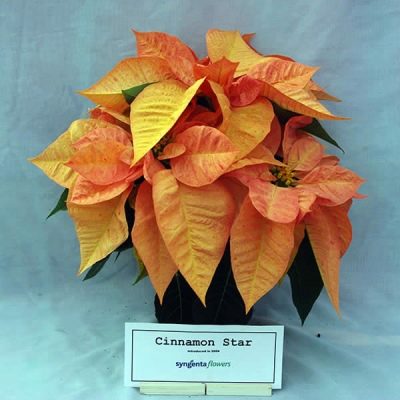
- Lemon Snow. A variety belonging to crops with yellow additional leaves. Unlike the previous hybrid, this poinsettia will be much softer in color during the flowering period.
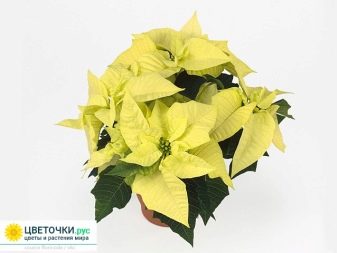
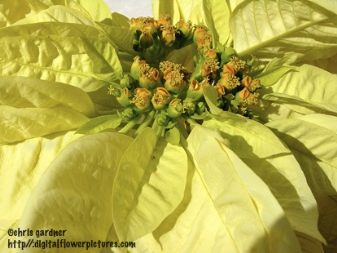
- Premium Ice Crysta. The plant has leaves slightly pointed to the edges and green inflorescences inside.

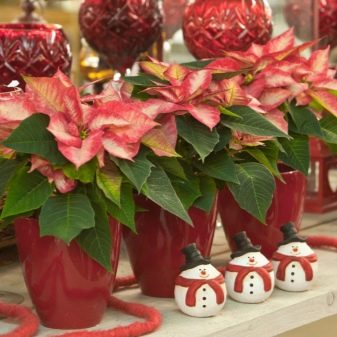
- Jingle Bells. A very bright and festive flower with carmine-red foliage, which will be decorated with whitish blotches.

- Sonora White Glitter. Plants with rich green foliage and purple blotches.
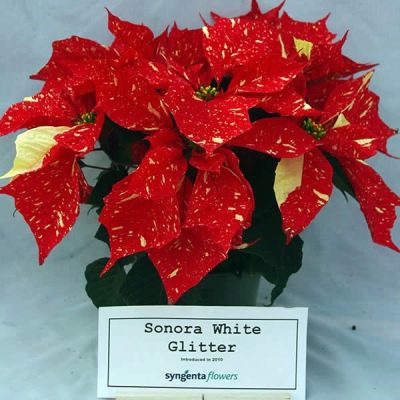
Landing subtleties
Together with the rest of its family, poinsettia develops best in light soils, since such a soil will perfectly pass moisture, and the natural aeration of the air will not be disturbed. Therefore, during planting stagnation of moisture in the pot or untimely moisture should be avoided. To root the poinsettia, it would be more correct to use specialized soil mixture, which can be purchased in the store or prepare the soil for planting yourself.
The optimal composition for indoor culture will be three parts of turf, two parts of leafy soil and one part of peat with sand. In addition, the plant should be rooted and transplanted with mandatory drainage. The optimal indicator of soil acidity for a flower will be values in the range of 5.5-6.5 pH.
Before planting a flower in purchased or prepared soil, it must be sterilized without fail. In this case, you should use a weak manganese solution. Laying broken bricks on the bottom of the pot will have a positive effect on the development of culture, which will reduce the risk of waterlogging and stagnation of moisture in the soil.
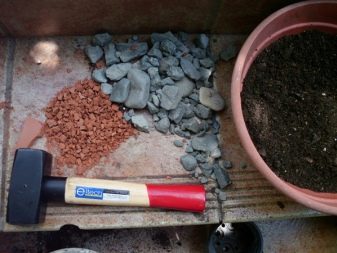
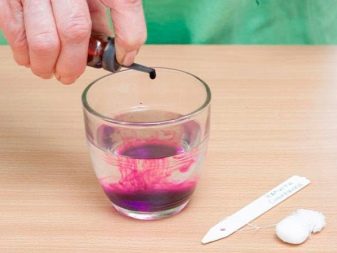
The "Christmas star" can grow well outdoors, the main thing is to root the flower in drained soil. When planting, avoid direct sunlight on the crop. It is more correct to place crops in open ground in partial shade. The hole for the bushes should not be large, and the soil around the flower will be more correctly mulched. Poinsettia will respond well to various feedings. In this case, you can dwell on phosphorus or potash fertilizers, which should be carried out before the active growth of the crop begins.
Water the flower as the soil dries up, and after the introduction of moisture, loosen the ground.

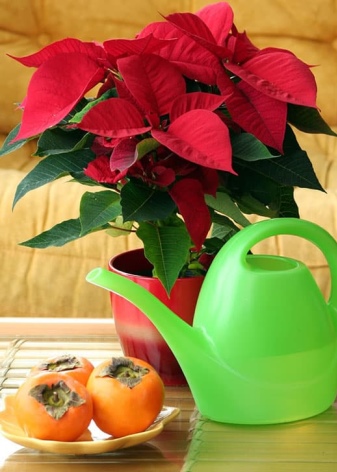
Care
The key to active growth and beautiful blooming of the "Christmas Star" is the provision of competent crop care.The plant itself can signal the grower that some mistakes have been made in terms of ensuring optimal conditions. The most common signs will be as follows:
- if the plant's green mass began to change its color from green to yellow, while some of the leaves fell off, then, most likely, the container with the flower was placed in a draft;
- the presence of whitish inclusions on the inflorescences indicates that excess moisture gets on the leaves;
- leaves, together with inflorescences, can fall off if the culture rotts the root system in the light of excessive watering;
- the presence of a yellow edging on the green mass indicates dry air in the room, especially such situations will be relevant during the heating season;
- if almost all the leaves of the plant have disappeared at the same time, then a sharp drop in temperature occurred in the room, and there is also a lack of light.
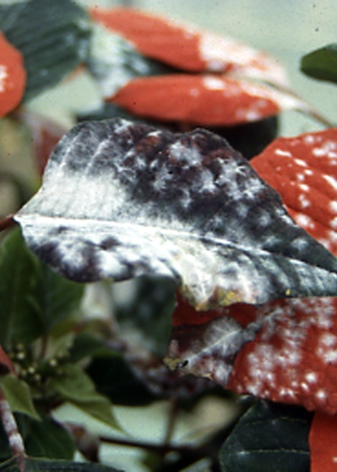
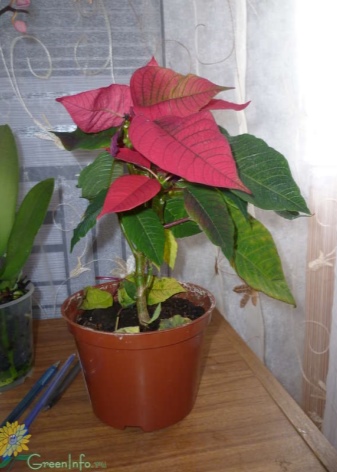
To grow a healthy and beautiful poinsettia, you must adhere to certain rules of crop care.
Lighting
During the growing season, the plant will need maximum lighting. At this time, you can place a flower on a sunny windowsill, the main thing is that it is reliably protected from drafts. In the summer months, if possible, the culture can be planted in open ground or put on a loggia for several months, taken out of the room onto the veranda.
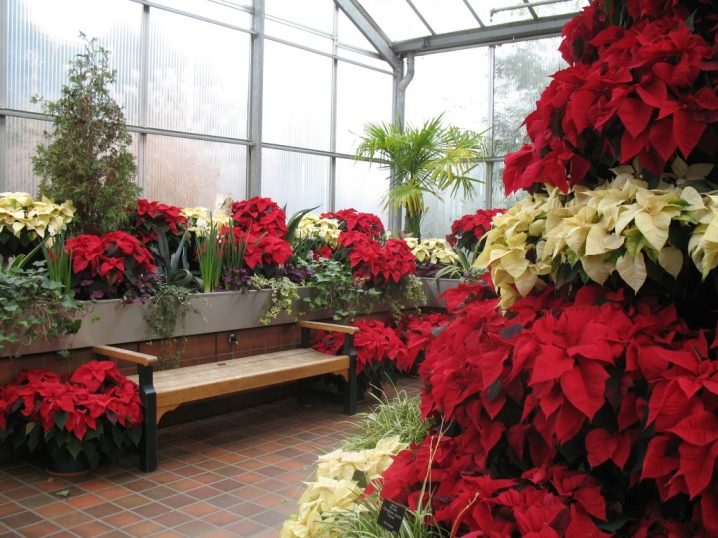
In winter, when daylight hours are short, in order to make the poinsettia bloom, it is worth worrying about an additional light source in the afternoon. For these purposes, there are special phytolamps.
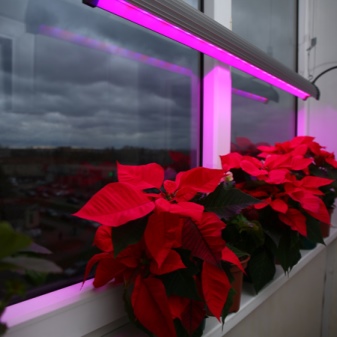
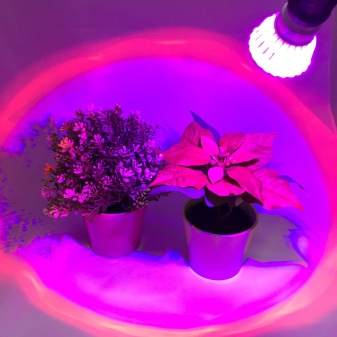
Watering
Hydration care will also depend on the season. As for the summer and hot months, the flower will need abundant and frequent hydration, and in winter, after the poinsettia enters a resting phase, watering should be gradually reduced. It is recommended to moisten the culture with settled water at room temperature. However, over-watering should be avoided at any time of the year as it can lead to rot.
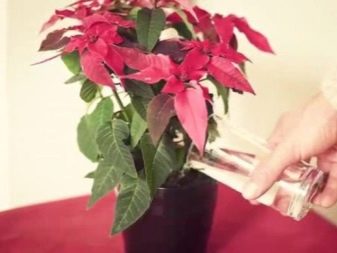
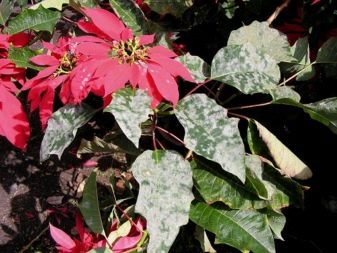
Temperature
When breeding poinsettia at home, care should be taken to maintain the maximum constant air temperature throughout the year. The most suitable value for a flower will be a value in the range of + 18-25 degrees. In the flowering phase, it is worth controlling the temperature so that it does not drop below +14 degrees. After the culture has faded, you can reduce the indicators to + 15-17 degrees. However, sudden changes can cause the plant to shed its foliage.
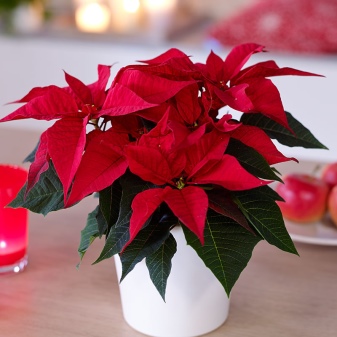
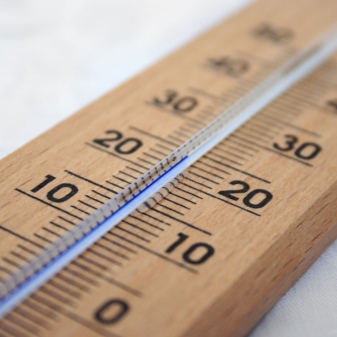
Humidity
Dry air has an extremely negative effect on the appearance and development of poinsettia. With dry air and high temperatures, an insect pest - a red spider mite - can appear on the plant. To maintain this indicator within the normal range, flower growers should definitely spray the leaves. This will help to restore sufficient moisture and also avoid the appearance of dangerous insects. When a tick appears on the poinsettia, the leaves fall and curl, so a visual inspection of the plant should be carried out regularly.
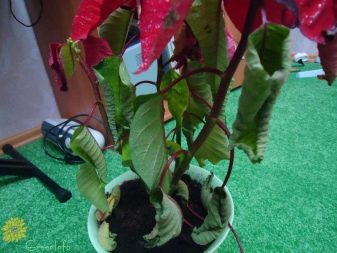
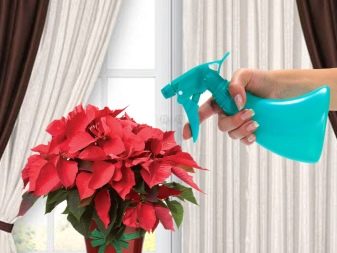
Fertilizers
In order for the culture to bloom and develop well, its owner needs to carry out root dressing twice a month, from spring to late autumn, using a complex with mineral fertilizers for this. In the summer, you can replace the store composition with a weak mullein solution. As for the winter months, when it blooms, the grower should provide regular feeding with formulations that include potassium.
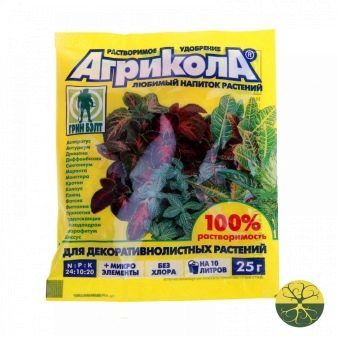
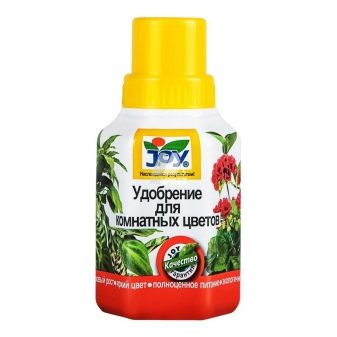
Pruning
A healthy Christmas Star is characterized by active growth. In order for the flower to have a decorative appearance and at the same time not become too large, at the end of the flowering phase it must be shortened as much as possible. You need to cut the poinsettia so that the stems remain in the pot, the height of which will not exceed 10 centimeters.Over the next months, if necessary, it will be enough just to slightly adjust the shape of the plant at your discretion.
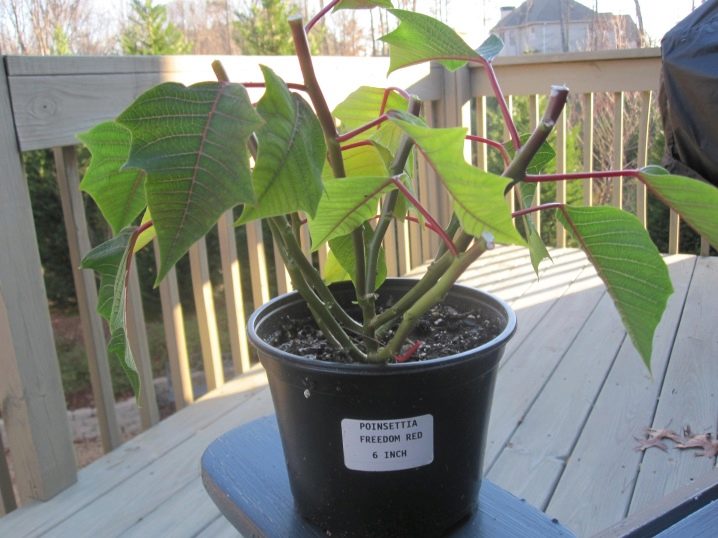
Transfer
Before replanting the poinsettia after purchase in another pot or as it grows, you should prepare the correct soil mixture with normal acidity for the culture. Also, don't forget about drainage. It would be more correct to replant the poinsettia every year, but only in early spring, for example, in April. Before replacing the soil and container, you need to cut off the stems of the plant by a third, and transfer the flower itself to a warm and brightest place in the apartment.
In March, it is necessary to water the culture only with warm water, and as new shoots appear on the plant, you can start transplanting it into a new pot, which will be several centimeters wider and deeper than the previous one.
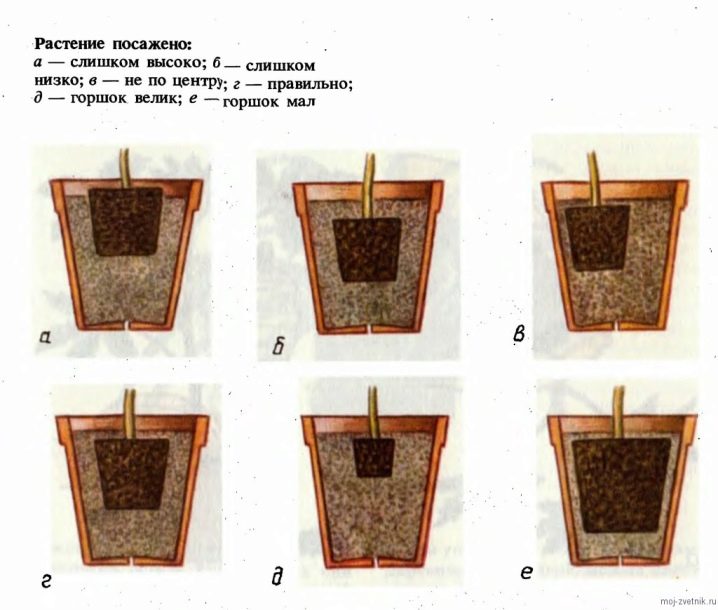
Immediately after transplanting, the poinsettia should be kept for some time in a room where the temperature will not be lower than +20 degrees. During this period, for better adaptation, it will need frequent watering and spraying.
The transplanting algorithm involves removing a flower from an old container along with an earthen lump, after which the selected drainage is placed on the bottom of the new pot and a thin layer of fresh substrate is poured. The plant is placed in the center, the roots are straightened, then the pot is filled with earth, compacted from above. After 2-3 weeks, new branches should appear on the culture.
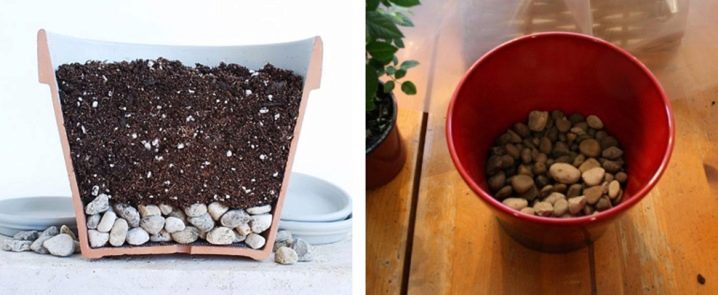
For the summer, the "Christmas Star" can be buried in the open field. To do this, it is worth choosing a place under the spreading crown of a tree in partial shade. The flower can be rooted for the summer in the garden right in the pot, where it is molded.
However, in the middle of summer, it is recommended to stop pruning so that the culture can form flower buds on the branches.
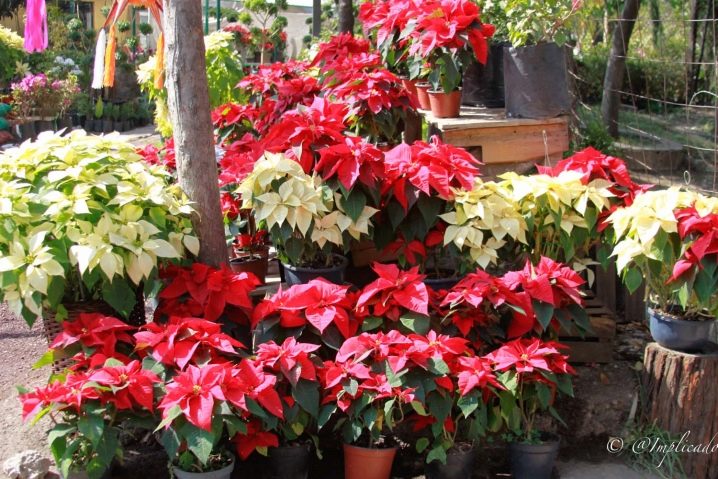
Bloom
In order for the acquired culture to please with its regular and long flowering, all of the above recommendations should be followed that relate to care. It is also necessary to give the poinsettia time to rest. When the plant stops flowering, watering should be gradually reduced, and the stems should be shortened in the spring.
With the arrival of autumn, it will be necessary to slightly reduce the daylight hours for the culture, it should be 10 hours over two months. Then the pot with the plant is placed in a shaded place or covered with raw materials that will not transmit light. Such manipulations will make it possible for the flower to form buds, as well as color the bracts in a shade according to the varietal affiliation.
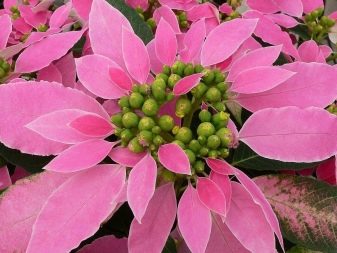
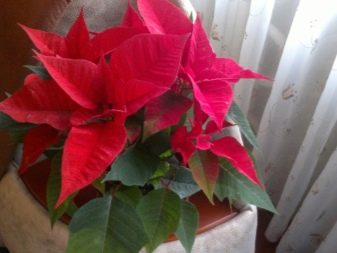
Fertilizing is another effective option to help boost flowering. Top dressing is usually done in the spring, when, after cutting, young shoots begin to develop in the culture. If there are a lot of young leaves, it is worth facilitating the growth of the plant, leaving only 3-4 strong shoots on the culture. However, you should not throw them away, since in this way it will be possible to multiply the tropical culture at home.
By the end of January, the poinsettia begins a resting phase, during this period its leaves can turn yellow, dry out and completely fall off. Some growers discard the plant at this stage, but pruning the stems and aging in a dark place will preserve the plant and enjoy its flowering in the years to come.
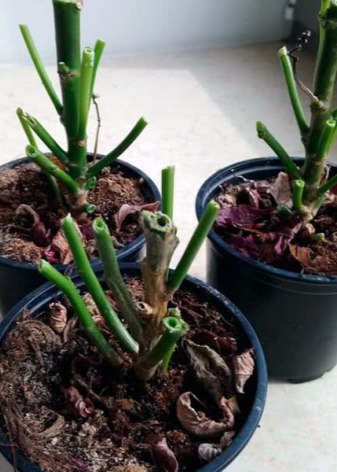
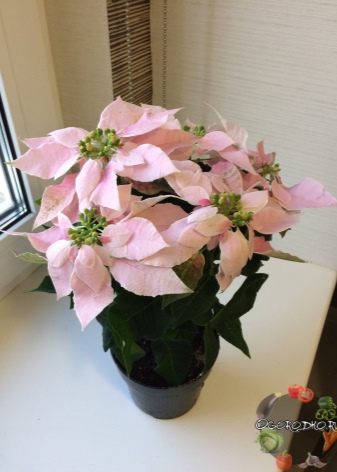
Reproduction
"Christmas star" reproduces well in two ways:
- cuttings;
- with seeds.
In the first version, material for subsequent reproduction is obtained in the spring, when the culture gives new shoots. Shoots are cut, foliage removed from them and grown in a small greenhouse at home. The substrate for young shoots is prepared from peat and sand. Before planting the resulting material in the ground for further germination, you will need to remove the thick juice inside the shoots. In this case, the cut parts of the culture must be kept for a quarter of an hour in ordinary water. Cuttings take root very quickly, the main thing is that the appropriate temperature regime of + 25-28 degrees is observed for the plants. As a rule, after a month, young shoots already have the first roots, and closer to spring, young plants can already be planted in pots.
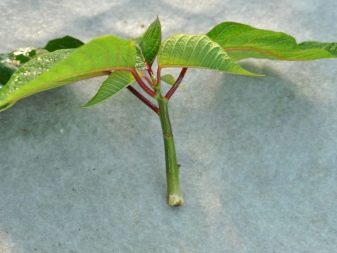
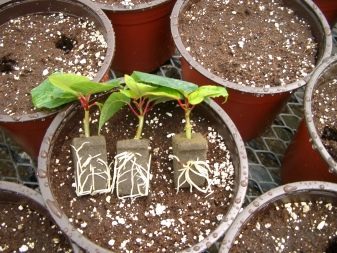
However, in the first year after rooting, the poinsettia will not bloom, but the rest of the development phases of the culture will remain. Therefore, at the end of January, the flower will shed its leaves and will be at rest. By next winter, with proper care, the flower will delight households with its flowering.
As for the seed method of growing a plant, this option will be longer. First, the seeds are germinated in loose peat in a shallow container with a transparent lid. This container must withstand the temperature within + 23-25 degrees... During this period, it is important to avoid stagnant air inside the greenhouse, so the cover must be removed regularly. The first shoots will appear in 1.5-2 weeks. As soon as this happens, the container with the plants is left without a lid and placed on a windowsill with good access to light.
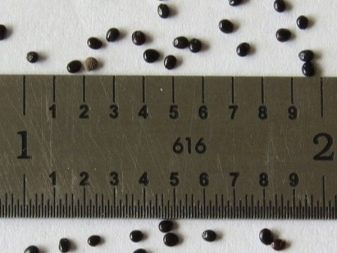
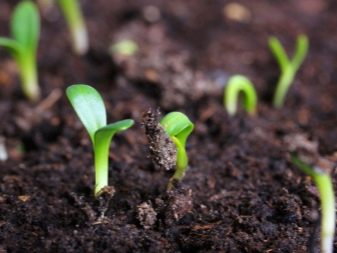
When the first leaves appear, the seedlings must be dived and planted in separate pots. In the future, care is reduced to regular watering, fertilization.
In order to get poinsettia seeds for subsequent reproduction, the gardener will have to resort to artificial pollination. To carry out this procedure, you will need two flowers in the flowering phase. Each inflorescence contains male and female flowers, but they open at different times. To carry out pollination, you will need to transfer pollen from one flower to another using a small feather.
The optimal container for planting young poinsettia is a pots with a volume of about one liter.
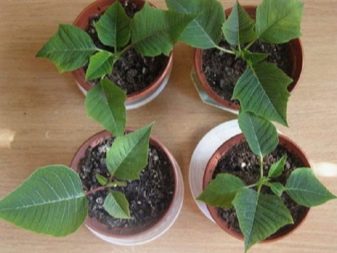
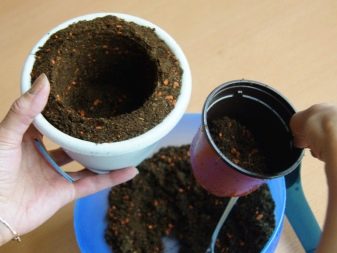
Diseases and pests
Most often, the tropical culture suffers from attacks by thrips, spider mites and mealybugs. Therefore, regular inspection of the plant at all stages of development is mandatory. With a minimum number, it will be possible to destroy pests quickly and without tangible losses. As a preventive measure, you can wash the poinsettia from time to time with soapy water under a warm shower. However, getting moisture into the pot of soil should be avoided. For these purposes, the ground is preliminarily covered with a film or other material that is capable of retaining water. Spider mites usually appear during the heating season when the indoor air becomes too dry. If yellow spots and cobwebs began to appear on the leaves, the culture should be promptly treated with insecticidal soap.
Chervenets are not a very small insect, so the pest can be detected almost immediately. As a rule, ants are carriers of worms. In addition to the soap composition, it will be possible to destroy the pest with an alcohol solution.
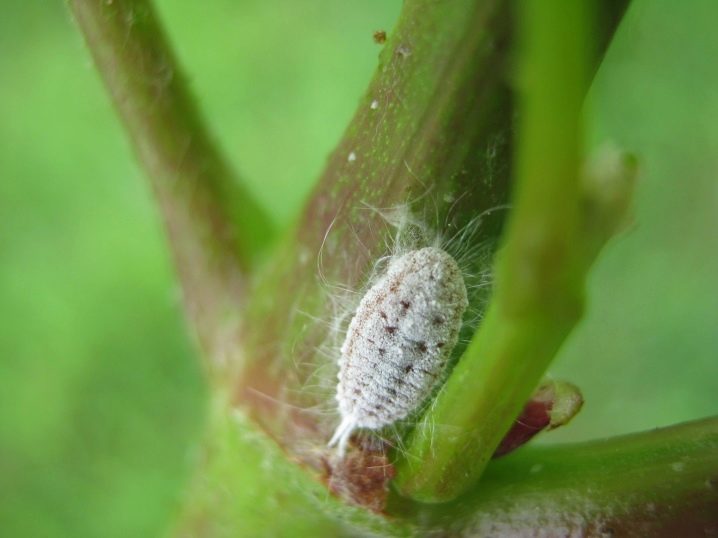
A flying insect, the whitefly, which usually settles on the back of the leaf plate of a flower, can also cause harm to the culture. In single quantities, this insect is not capable of causing serious harm to the plant, however, with a significant increase in the population, the pest can lead the flower to death. To destroy the whitefly, the culture must be washed under warm water, and then treated with insecticides.
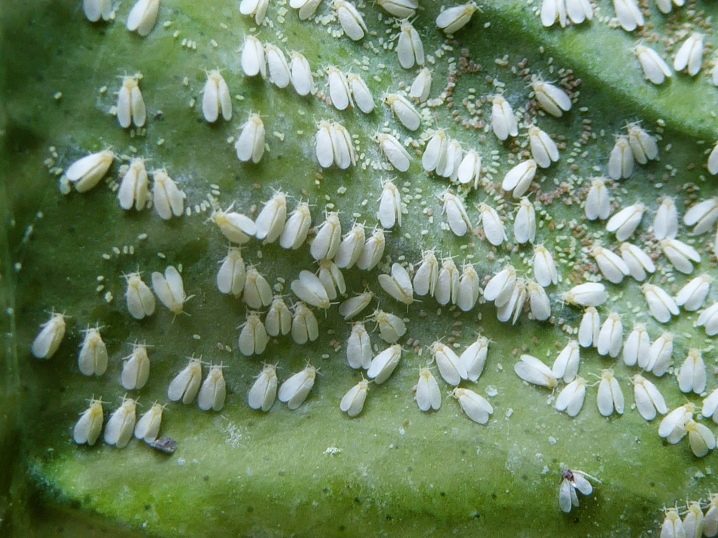
The list of pests of the "Christmas Star" also includes a mushroom gnat. It looks like a small midge, but the larvae of this insect actively feed on poinsettia roots, which can pose a serious threat to the plant when the insect population is actively increasing. Most often, after processing the flower with soapy water, a small but very dangerous midge disappears.
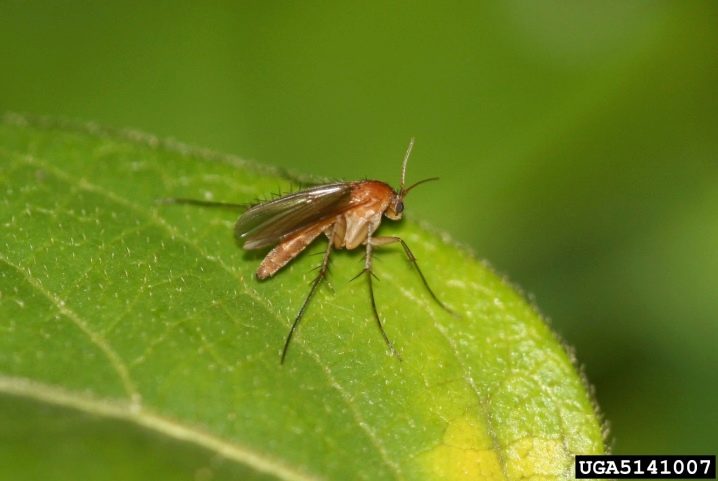
Scales and false scutes are insects that attach quite tightly to the stem of the plant.Visually they can be spotted quite easily as they will appear as light and whitish bumps on the crop. To cure the plant and destroy insects, it will be necessary to remove them from the flower, brushing it off with a toothbrush treated with a soapy composition. Then the stems of the poinsettia must be treated with kerosene so that a film forms on the surface, which will block the access of air, in the light of which the remaining pests will suffocate.
For plants that will have serious damage, you will need to use store-bought insecticides.

Aphids can also destroy indoor crops. In particular, these pests are actively developing on young and tender areas of the plant. To get rid of insects, it is necessary to process the flower with soapy water, however, spraying alone will not be enough, so the work will need to be done with a soft brush.
Only the soap composition may not have the desired effect, therefore, after this treatment, the grower will need to spray the culture with onion or tobacco infusion twice with an interval of 5-7 days. No less effective against aphids are store formulations, such as Iskra or Fitoverm.
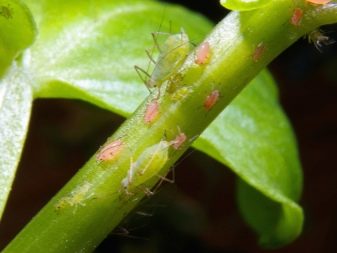
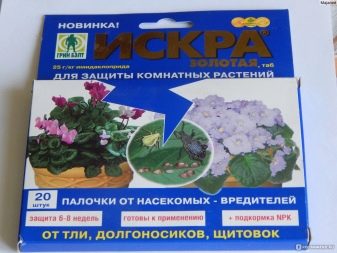
Among the diseases that poinsettia suffers from, it is worth highlighting gray rot. A sign of the appearance of an ailment is gray spots on the green mass and branches of the flower. To cure the plant, you should promptly remove the affected areas of the culture, and then spray with antifungal drugs, which can be purchased at any gardening store.
The culture can also be infected with the mosaic virus. Signs of the disease are blotches of a dark and light shade on the foliage. A flower could get such an ailment from sucking insects. To get rid of the disease, first of all, it is necessary to destroy the pests that have become carriers of the virus. However, an overly infected crop, even after the destruction of the pests, is likely to die.

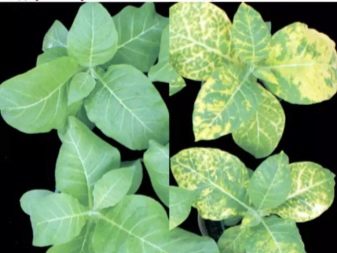
Poinsettia can be affected by root rot. The disease is manifested by the white and brown color of the roots, while the young foliage becomes whitish, and the rest of the green mass acquires a dark edging. Root rot is a fungal infection. A deficiency of mineral salts in the soil can provoke an ailment. Treatment of the most beautiful milkweed consists in the introduction of complex fertilizers, frequent watering. Fungicides are effective agents for combating the disease.
The flower is susceptible to such a disease as southern late blight. The external manifestations of the disease will be withered foliage and soft rotting roots. The causative agent of the infection is a fungus that will develop in moist soil, with stagnant moisture. As a preventive measure for getting rid of such an ailment, there is the provision of good drainage in the pot, the minimum frequency of watering, as well as the treatment of the culture with the store-bought composition "Alet".
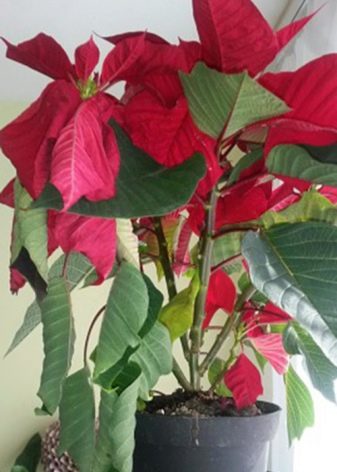
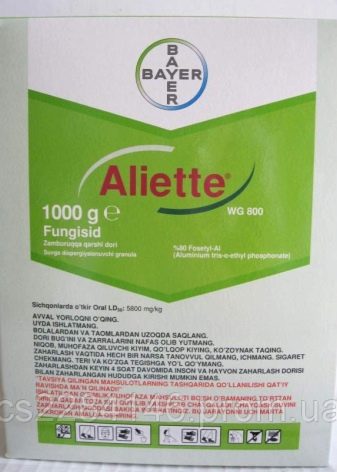
Sooty fungi appear on the plant as a light bloom at an early stage, which gradually turns black. The carriers of the disease are insect pests. For treatment, a soap shower is practiced, as well as the destruction of insects with a lime solution.
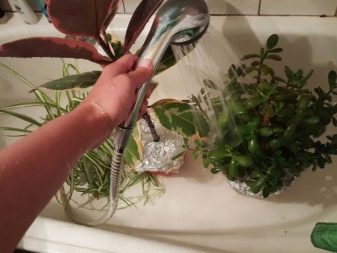
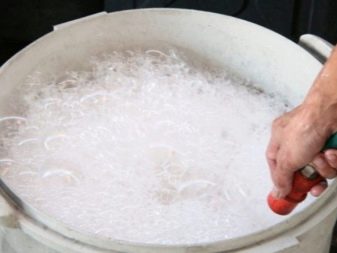
Reviews
However, the implementation of the basic recommendations regarding care, taking into account the phase of flowering and dormancy is mandatory. Some summer residents prefer to grow crops not only on the windowsill, but also in the open field.
For tips on growing poinsettia, see the following video.

















































The comment was sent successfully.